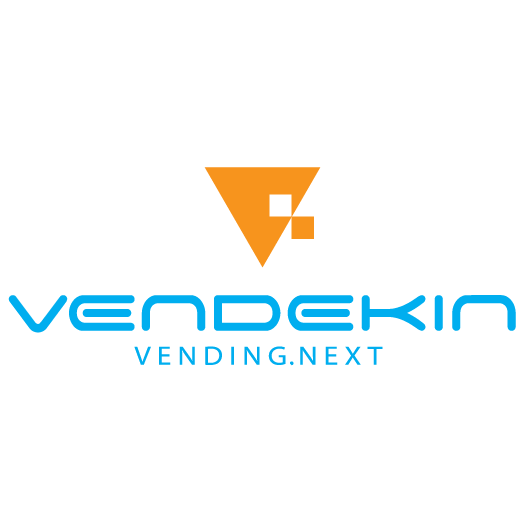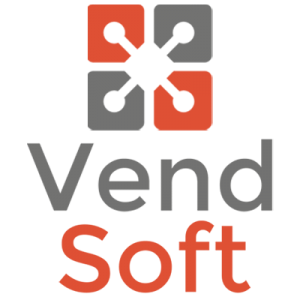VendETA
"If we tried to think of a good idea, we wouldn’t have been able to think of a good idea. You just have to find the solution for a problem in your own life."
-Brian Chesky, Co-founder of Airbnb
Milestone 1

Problem
Over the last decades, the vending machine industry has been saturated by the classic approach (offering products such as snacks, coffee and refreshments), while the concept of selling products through automated machines remained mostly unexplored.
Furthermore, the user experience remained almost the same since the earliest models of vending machines, being as simple as a quick overview of the products displayed, followed by a decision and a transaction, without any additional details, recommendations or an intent of using the service again.
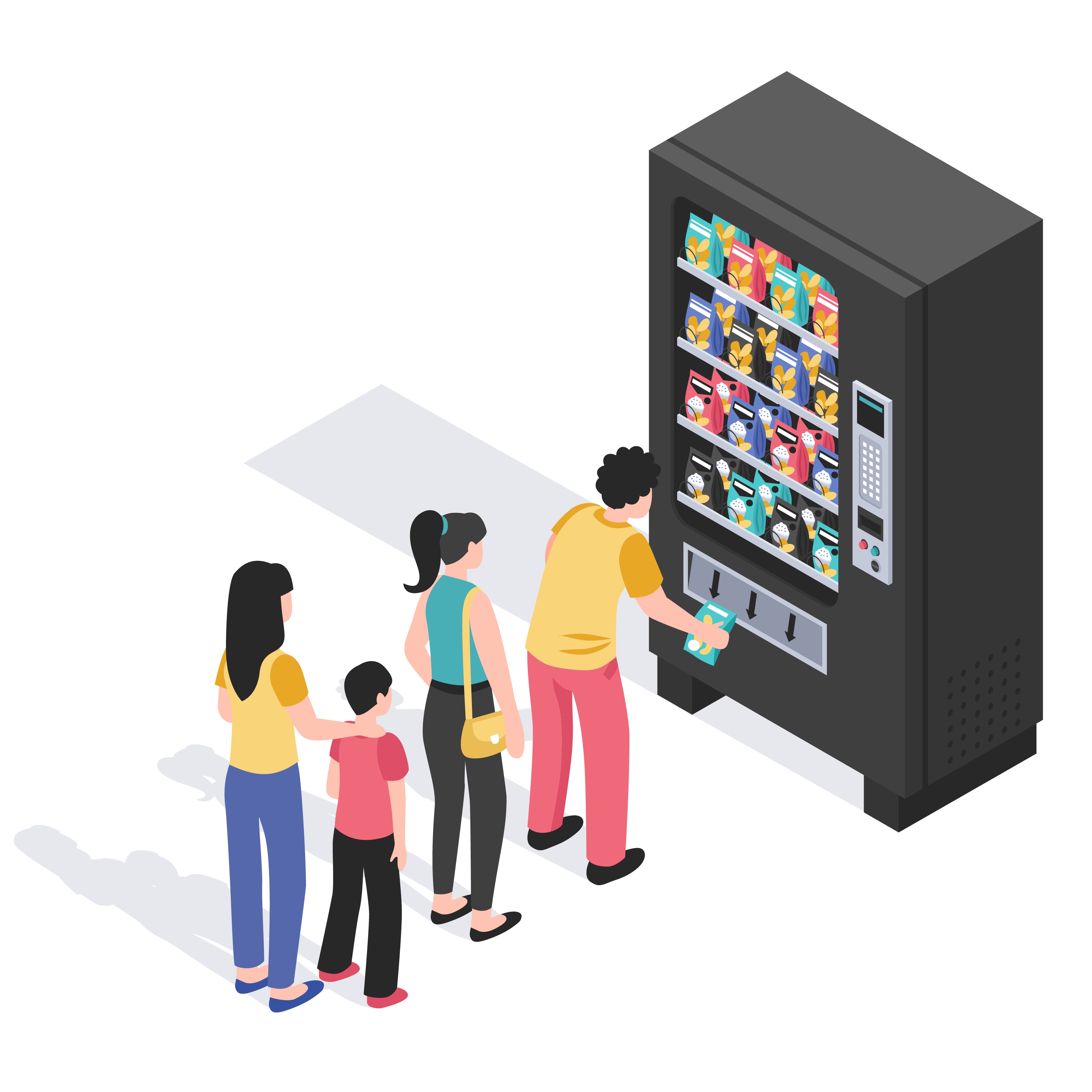
Solution
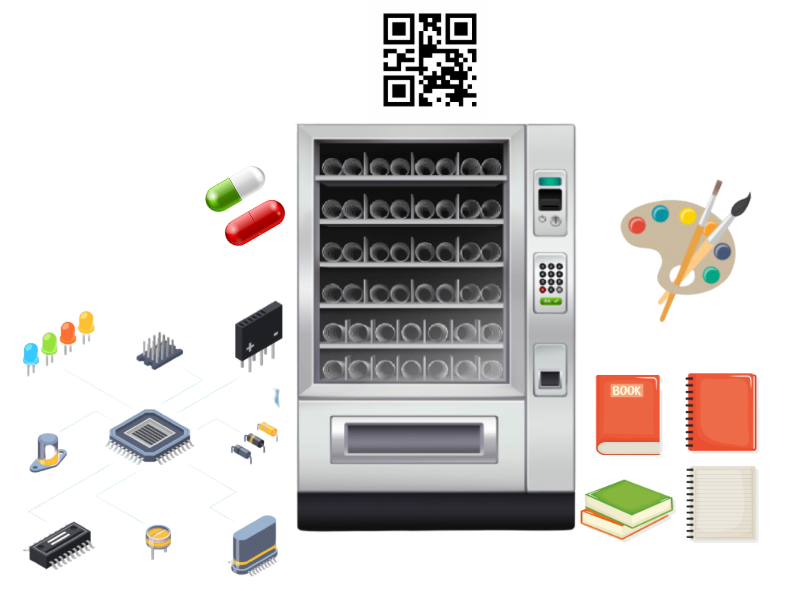
VendETA is a tool which can help vending machine business owners to build a relationship with their customers, while making the selling process quicker, easier and more accessible.
By displaying relevant information about the products and by asking the customers about their experience and which products would they prefer to buy more often, VendETA aims to offer a personalized approach to the vending machine industry.
Using smart vending machines and IoT technology, our goal is to diversify the product range and user experience, in order for the vending machines to be used in a different approach.
The aim is to help Universities, Companies, Hospitals and even Restaurants distribute specific products and build a direct relationship with their customers and partners (beside the classic snack-approach of a traditional vending machine), while providing a contact-less approach in the acquisition process.
Customer segment
VendETA can be used by retail businesses or vending machine owners to facilitate the processes in order to efficiently handle their interactions with customers. Additionally, it can be used to offer a more accessible alternative of supplying educational materials for students or teaching props for teachers.
Another segment is related to customers interested in buying various products in a fast and accessible way, at an affordable price and without concerns about expected delivery time or stock availability.
Competition
Advantage over competition
- Undeveloped market in most European countries (including Romania)
- Educational purposes for encouraging research among students and teachers
- More flexibility regarding the acquisition of various components in a short
amount
of
time
- Time efficiency: Avoid long walks to the provider, fulfill daily needs at the
nearest
machine.
- All the essential information about the products can be found in your pocket
- Providing accessibility for tehnical universities, regarding practical projects
- Quick access to information with the use of QR codes
- Further developments can lead to customized stocks of products
Key metrics
- User engagement by downloading the app and buying products
- User retention
- Relevancy of new features
- Signed contracts with institutions
- Number of businesses interested in using the tool
- Increase in the number of products sold
Cost structure
In this section, a high-level overview of the costs will be provided, regarding the usage of the VendETA tool. These are of fixed-type nature and can be observed below:
- Application and vending machine maintenance
- Software licensing
- Cloud usage
- Bank charges
- Marketing and advertisment
Revenue streams
- Selling different products using vending machines, which will be found in key
locations
- Different sponsorships/partnerships with other businesses that produce these
products
Milestone 2

Identifying the problem
As in most technical universities, students are required to learn and practice theoretical notions by making use of different components and materials, which (for most of the time) are not provided individually by the respective university.
Therefore, it comes to students’ own research and experimentations to find the right learning materials for practical exercise, by comparing prices, delivery time and bulk packages, either online or at retail stores.
Here, we have identified a problem which can lead to various issues regarding preparations for exams, practical projects, deadlines and overall an educational experience that lacks the convenient practical approach of what students are preparing for in class. Moreover, some teachers may find themselves stuck in a similar situation, unable to provide students with enough practical examples and relevant experiments, by using old and unreliable technical consumables, which can alter the learning curve.

Finding a solution

Our proposed solution is simple, yet extends with endless possibilities of upgrading functionalities and user experience.
Currently, most universities provide access to a few vending machines for snacks, coffee and refreshments, therefore everyone is used to purchasing various food & beverage items using these machines for convenience.
By combining the advantages a vending machine can offer (accessibility, contact-less transactions, better overview of the products displayed), we came across the possibility of using these machines in order to offer students & teachers alike a different range of products, more exactly the technical consumables they need for educational purposes and projects.
This solution consists of a series of physical vending machines placed conveniently inside specific campus locations, where most of the users would have the quickest access to products, as well as an app for mobile devices which will help users decide which product they should buy, regarding the right fit within a specific task or ongoing project.
Customer Discovery Plan
Even if the problem was noticed locally, by word of mouth, we wanted to validate the problem on a larger scale, thus asking students, teachers, assistants and researchers if they encountered it throughout the years and how it affected their work and career development.
On the other hand, the proposed solution involves partnering up with universities and distributors, along with vending machine owners for a start, and we interacted with different representatives of these units for a better understanding of their needs, in order to move forward with the implementation of our plan.
The whole idea orbits around technical universities, but it can be extended to med schools or art schools, using most of the main principles previously discussed, which involve easier access to practical learning tools and materials. For now, we will focus on these technical universities, where the main elements used for projects and different activities consist of electronical components, passive elements or auxiliary equipment, and we want to find out what are the most used elements that are not provided from the start, but users need to eventually purchase them anyway.
Customer Segment & Problem Validation
The main customer segment for our proposed solution is composed of young professionals / students, aged between 18-30, currently developing certain technical skills for their careers, either as students or working for a tech company.
We managed to reach a number of respondents via different chat applications and social media websites, such as LinkedIn or WhatsApp.
Customer Segment
Therefore, we composed a short questionnaire dedicated to these specific groups, which aimed towards a better understanding of their problems they faced and the obstacles which delayed their progress in areas regarding the development of practical projects.
Even if we encountered some of the proposed answers ourselves (examples of this kind of problems), we let the users fill in with their own personal experiences. This way we identified interesting views and specific problems which can lead to delaying a deadline or even coming short of a complete, functional prototype for the presentation stage.

Then we asked them to provide a few examples of the most used materials in different projects, in order to have a better perspective upon what potential customers would like to have access to, in a quicker, more convenient way.
Most of the answers referred to certain passive components, wires, sensors, batteries, followed by some specific materials which can only be purchased individually, being highly customizable. This leads to a solution that would include the most used components and generic items that most of the projects would require. A different research must be done in order to find out exactly what these can be, so we noted that for further developments.
Another important aspect is the delivery time or effective time spent on finding available items (in stock) or stores that are easy to reach, for purchasing items.
As in the initial proposed solution, a method for providing all the required information, such as datasheets, must be implemented. Besides the price and delivery time, the user is mostly interested in the quality of the products, as well as technical specifications.
Vending machines are the main argument in our solution, being a convenient approach towards user experience and accessibility, but we cannot use just any type of vending machine model to sell these types of specific products, so we asked our respondents about their preferred methods of payment, as well as the most important aspects they consider when buying from a traditional vending machine.
Lastly, we needed to know if users are familiar with the scanning of QR codes and how can it benefit them, when making a purchase.
One user suggested that the questionnaire was, initially, too specific and he didn’t have the liberty to answer more personally, so we took his advice and changed a few questions from a yes/no form to a more open form, where users can add their own answers. This way, we could collect more relevant information and come up with a more complex solution, that can help more customers.
Potential partners & business validation
Since our vending machine platform needs to be a facilitator to both distributors/manufacturers and universities, our team elaborated another form, which was meant to discover a way that we can collaborate. We requested feedback regarding the potential issues of our implementation ideas, beside any other suggestions responders would have.
First, we talked about problems and a possible solution when we addressed the distributors. The target companies were distributors, manufacturers and research & development individuals, which were reached via email at first.
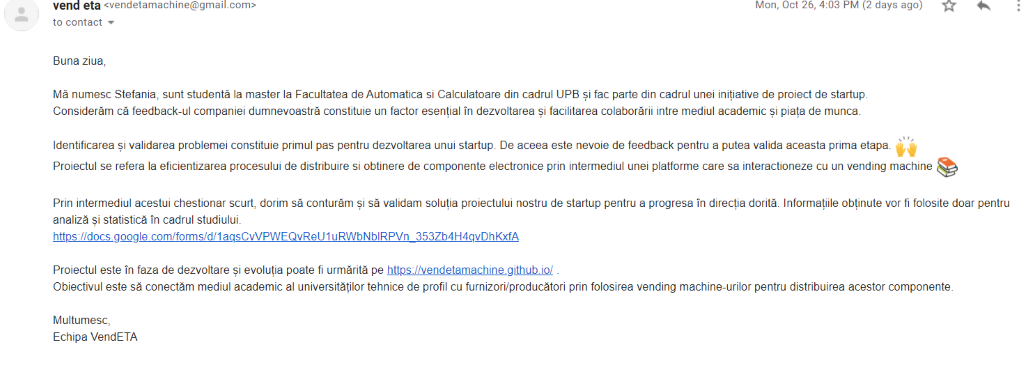
We have reached the following suppliers: Avnet Silica, Comet Electronics, EBV Elektronik S.r.l, ECAS Electro SRL, Farnell element14, Marctel, MT Market Technology, Microchip and NXP.
We have reached aproximatelly 15 potential partners, received 5 answers to the form, as well as one descriptive answer, which outlined some of the setbacks we could encounter.

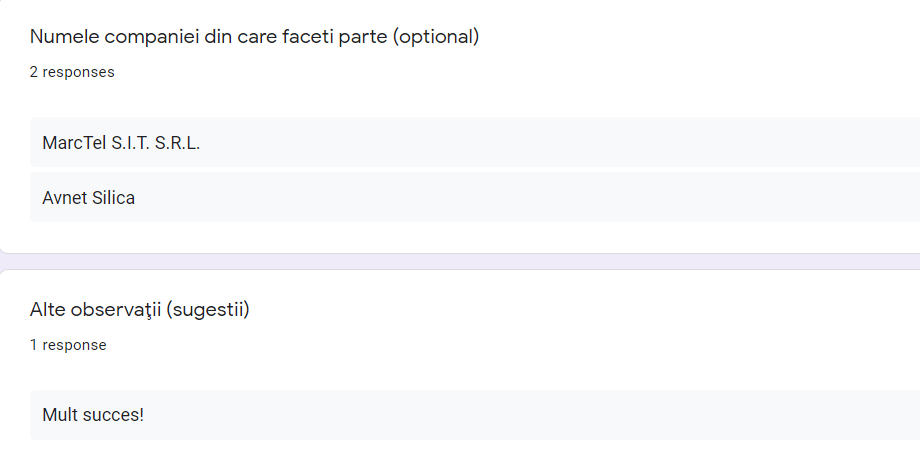

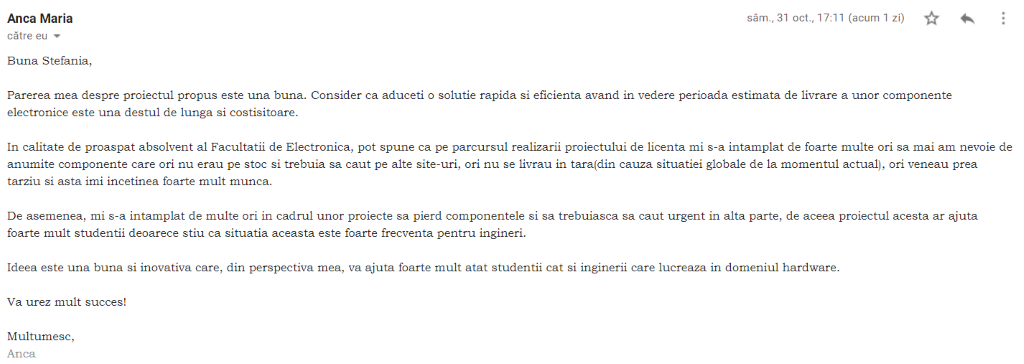
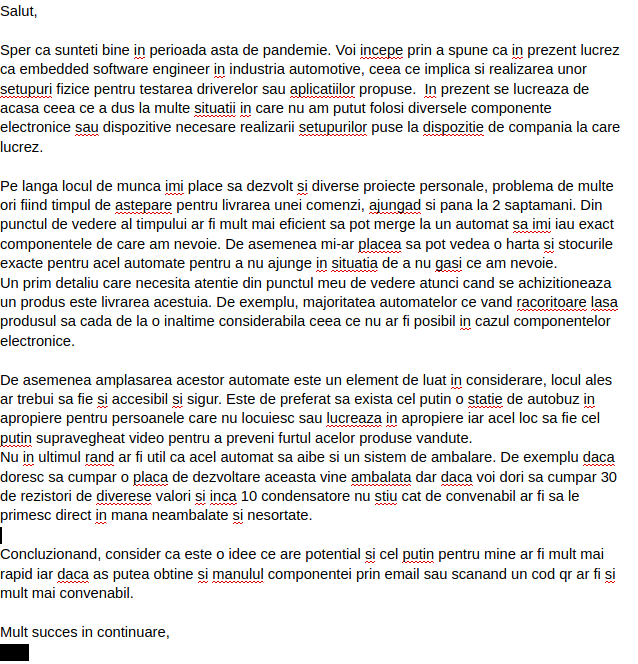

Insights affecting our product
We have discovered quite a few people that went through similar difficulties regarding projects and implementations, as we did, even if not everybody faced these issues. We have managed to collect a lot more information than when we started this approach of the vending machine business, together with a dedicated app for custom products.
Furthermore, we have identified aspects that we have not taken into consideration, such as the diversity of the products, packaging or possible means for vending items, but now we have a larger horizon about the whole process that will take place in the future, in order to have a functional prototype to showcase the advantages we want to bring.
Most of the answers referred to electronical components or tools, but it can be extended to products that are needed in various places. This is something we need to research more thoroughly, as well as how can distributors help out by offering their products to be sold using vending machines.
Moving to Customer Validation stage
Even if there are complex approaches to making such a system stand out and be practical and functional, we can start working on a prototype (app and physical machine), in order to outline the advantages it could bring. After that, we can continuously ask for feedback so we can achieve customer satisfaction from using our tool.
Milestone 3

Wireframes
Product Design
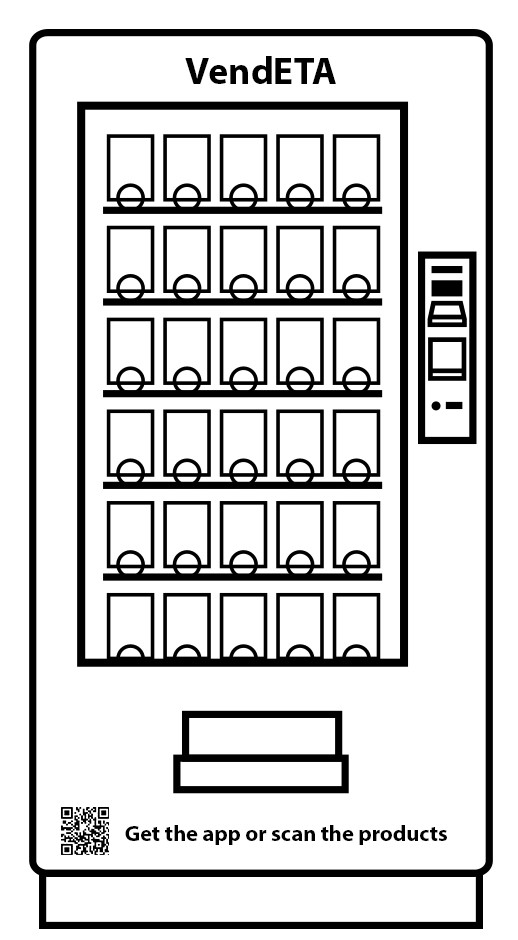
Sign In
Sign Up
Search product
Feedback
Menu
Products List
Locations Map
Partners List
Contact Page
Landing page
If you like our idea, you should check out our landing page!

Milestone 4

Interviews
We did a total of 6 interviews, which proved to be really insightful. You can check them below
Interview #1
Interview notes
- Works as a software tester
- Made multiple hardware projects
- Components used in these projects are: resistors, capacitors, microcontrollers, sensors and PCBs
- Components were bought online
- Identified problem: high delivery time
- Solution: more convenient to purchase components from vending machines, than online
Interview #2
Interview notes
- Works in the financial field, with background in sport
- He places orders online, especially food
- He thinks that is more comfortable to buy products from vending machines
Interview #3
Interview notes
- Studied aerospace engineering and works in this particular field
- As a project, he developed a module which captures atmospheric data
- He ordered the needed components online
- Delivery time was an issue for him
- He would have wanted a shop inside university campus
Interview #4
Interview notes
- Graduated from the Faculty of Automatic Control and Computer Science
- Currently studying Avanced Security Sistems, Master's Degree
- Works in the embedded department focused on automotive projects at NXP
- His first experience using electronic components was in the 3rd year of University, working on a project
- Components used in these projects are: resistors, capacitors, microcontrollers, and PCBs
- Components were ordered online, but picked up from the physical store (Optimus Digital).
- Identified problems: had a last moment modification in his project and he payed an extra cost to get his components faster.
- Would like a mix between online shopping and buying from stores.
Interview #5
Interview notes
- Graduated from the Faculty of Automatic Control and Computer Science
- Currently studying Advanced Software Services, Master's Degree
- Works as a software engineer at Private Machines, in security services.
- Made the Battleships game using a led matrix
- Components were ordered online.
- Identified problems: high delivery time and poor documentation for components.
- Prefers physical stores over online shopping for being a faster process and for being able to consult with the seller.
Interview #6
Interview notes
- Bachelor Degree in Electronics
- Currently studying Computer Science in Germany, Master's Degree
- Worked on many practical projects, including the Bachelor Thesis where she developed a Smart Home System
- Components used in these projects are: Raspberry Pi 3, leds, sensors and sensors
- Found it hard to purchase the components and sometimes discovered that the components were incompatible.
- Identified problems: paying an extra tax for picking up an order from the store.
- Would have liked to have a store inside the University Campus.
User personna
Based on the interviews, we created the following user personna:
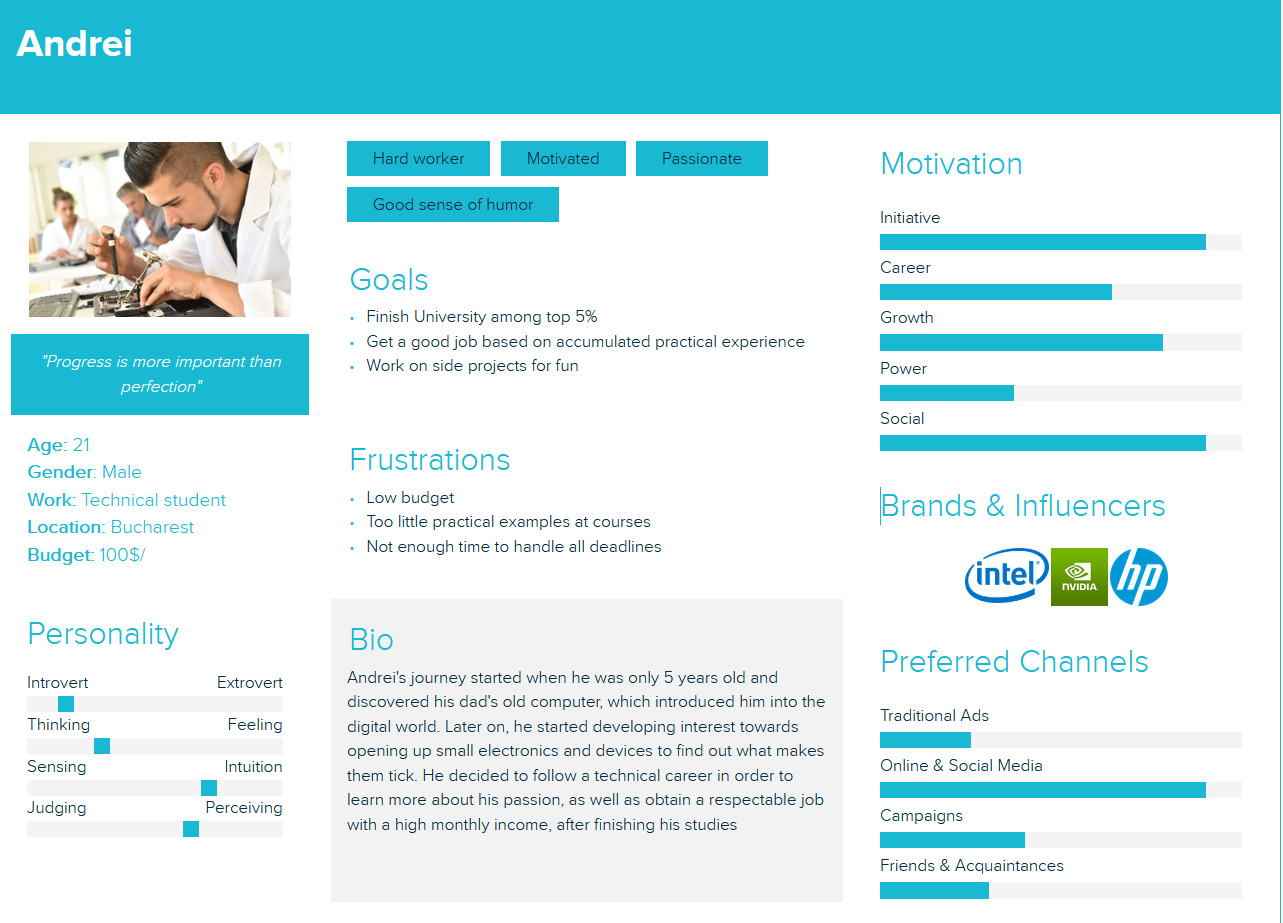
User stories

- As a client, I want to be able to get what I want to buy as fast as possible so that I do not waste precious time.
- As a client, I want to have access to a large variation of products and be able to compare products before buying.
- As a client, I want to be able to search for a component and receive suggestions with other compatible components.
- As a client, I want to be able to consult a specialist before buying in case I need their help.
- As a client, I want to have access to additional information about every product by being able to download a data sheet.
- As a client, I want to know the location of nearest vending machine where I can get what I need.
- As a client, I want to pay the fair price for products, without an additional processing fee. Also, it would be nice to have discounts if I ordered big quantities.
- As a client, I want to be able to pay both through the application and at the location with a card or cash.
- As a client, I want to be able to return the component if I am unable to use it and get a fast refund.
- As a client, I want to be able to write reviews and to read other buyers’ reviews on a specific product.
- As a client, I want to be able to make suggestions for new improvements.
User flows

Guest flow

Client flow

Client and Guest flow

Wireframe updates
After listening to the interviews, we decided to modify the wireframes.
We added the possibility to sign in as guest in order to use the app instantly
We added the transaction history for registered users



Milestone 5

Landing page update
We updated out landing page to be more user-friendly, adding a scroll arrow at the bottom to show more info about our services, our mission and our contact form. We also added a functionality for users to subscribe to our newsletter for updates and a potential launch of our app. All of these features can be accessed through the menu at the top of the page. We also added Google Analytics and Hotjar to track important metrics.
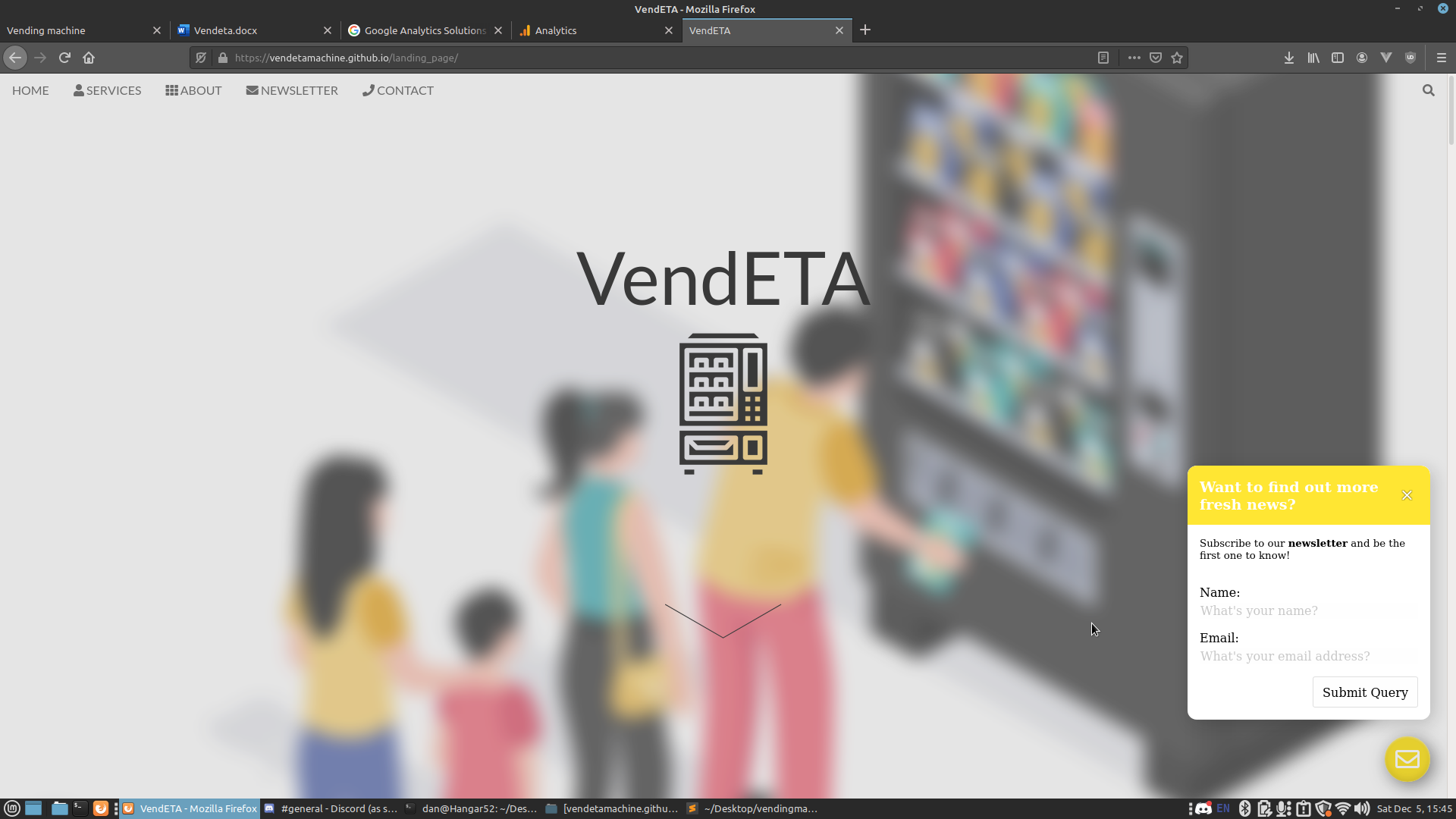
Lead generating campaign
Since the growth of our idea is strongly related to the accessibility and visibility to our potential users, the focus was to promote it on the most basic platforms used by people, which are Facebook (especially specific groups such Startup Romania, Antreprenori – Start Up Romania) and LinkedIn. Therefore, it could be accessed by a diverse range of people, which is what we seek in target customers.



After posting it, people started to reach out and offer their services in order to facilitate the marketing process and to watch our evolution (by subscribing to our newsletter).

In order to have a more professional approach and reach, LinkledIn is the right platform in order to get real and proactive feedback.

The post was reached by 813 people.

Analytics and metrics
To analyze our traffic, we used Google Analytics and Hotjar. We observed that a lot of Ad Blockers block these services, but, nevertheless, we gathered useful information of our potential customers. You can observe the following graph, extracted from Google Analytics dashboard :

In course of 2 weeks, our page was viewed 174 times by 130 different users. We also observed a bounce rate of 88.11%.

Most of our users used mobile to access our site, but 38.5% of them used desktop browsers. An overview of the nationality of our users can be observed in the following chart

We can deduce that social media exposure proved to be useful, as we can observed users from countries other than Romania.
We also used Hotjar to generate recordings and heatmaps, which proved to be very useful. As expected, many users accessed different parts of our landing page using navbar selections.

Another interesting fact is that our users tried to observe what other projects we have completed, a feature which will be updated in the future.

Another interesting fact is that our users tried to observe what other projects we have completed, a feature which will be updated in the future.
Formspree
A total of 14 users decided to subscribe to our newsteller. We used a service called "Formspree".
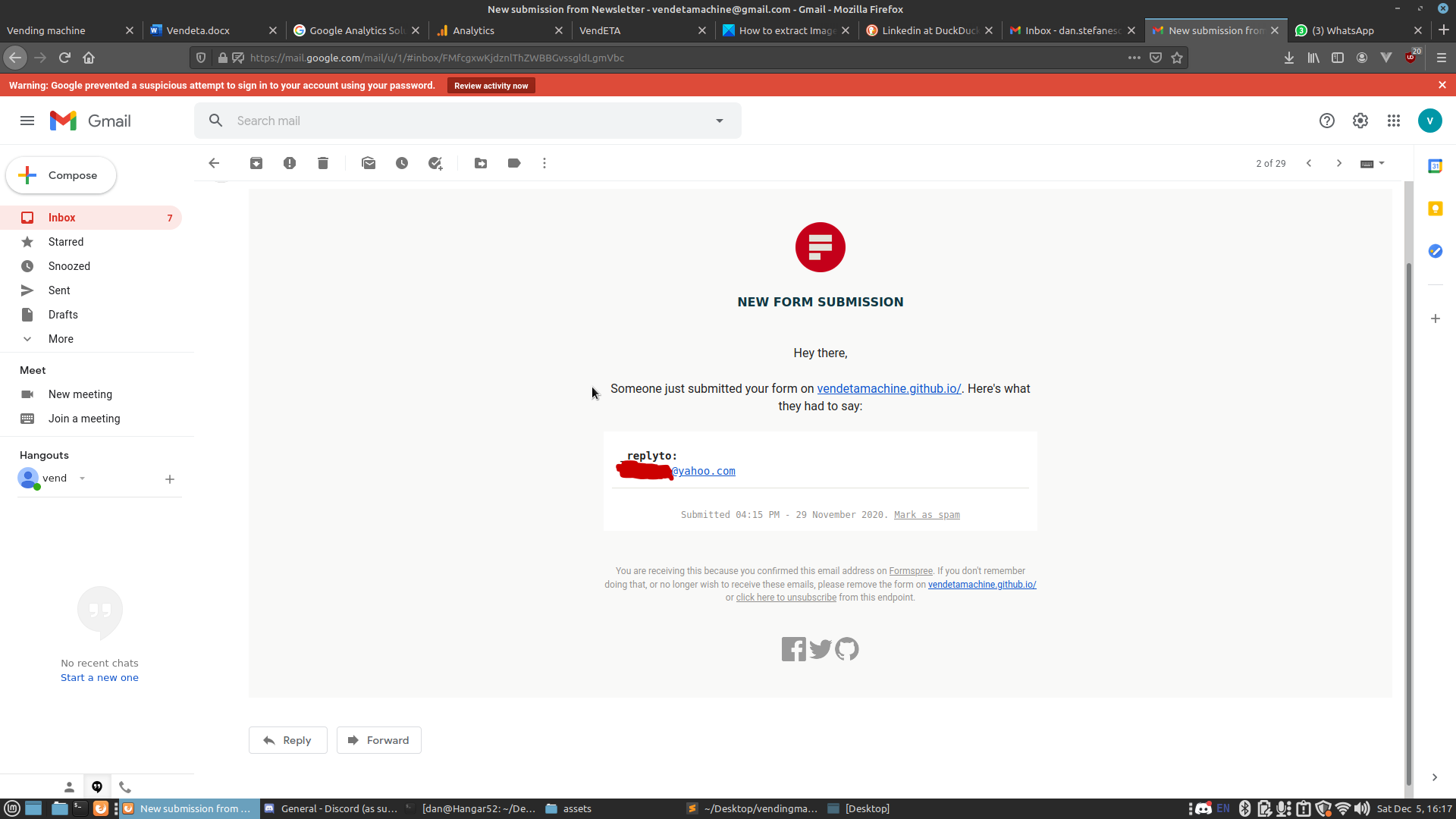
Campaign channel comparison
We used Facebook, LinkedIn and WhatsApp to share our landing page and get feedback in order to generate visits and collect data. We found out that most of them accessed the page through Facebook, being a higher chance of reaching a larger audience on a social media channel that is more frequented by users from our target. We also generated a few clicks by sharing it on different groups on Facebook, the posts being noticed by a larger number of people.
Milestone 6

Size of the Target Market

The initial target market will be the students, professors, and young professionals, aged between 18-30, currently developing certain technical skills. At the start of business, we target up to 130K+ potential customers (Romania, mainly focused on Bucharest, since a significant percent are working or studying here).
However, the number of potential clients cand increase as we develop different approaches on the variety of products, target locations and cities covered.
Competitors
We discovered that we have 5 competitors. Here are some information about each of them.
Vendekin pioneers the digitisation and democratisation of vending with its patented disruptive technology for unmanned automated vending machines, micro markets and self-service kiosks. Vendekin offers a wide range of intelligent vending machines disrupting the unattended retail sector and also offers touchless vending solutions to transform existing equipment into unmanned digital retail micro stores. Vendekin offers cashless payments and touch-free dispensation, along with a mobile-first approach for supply chain optimisation, increased business visibility, and advanced consumer insights.

Pay4Vendb is an app designed to buy any product from a vending machine via smartphone, including to integrate existing cashless payment systems. Operation is extremely simple: all the customer has to do is opening the Pay4Vend app on his smartphone, selecting the vending machine and proceeding with the purchase from the machine.
MoMa - the Mobile Management app for vending machines which provides the ability to manage your vending machines operation on the go, The app is an extension of an already powerful back end system that allows you to view machines with a comprehensive dashboard, last sales and alerts. As well as manage inventory and Alert thresholds from the palm of your hand.
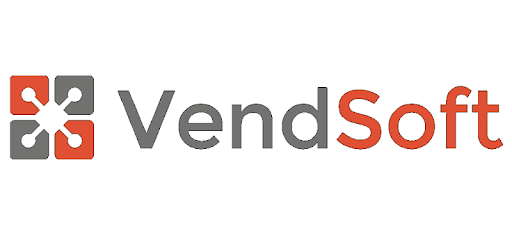
VendSoft is a cloud based vending machine management software with complete inventory control module. Supports dynamic dispatching and scheduling. Easily track inventory and purchases, optimize routes and automate deliveries with a simple-to-use, affordable solution.

Vendron Go is a mobile application that act as an alternate screen for vending machines. One of the core features of Vendron Go is to detect nearby vending machines that is running Vendron OS then display in IOS map to allows the user to able to navigate to the machine with ease. The funtionality of Geo-location and IOS Mapkit is being used by Vendron Go to display the nearby vending machines of the user. Another core feature of Vendron Go is able to act as a screen when the user is inserting notes (the mobile application screen will update accordingly) in the Vending Machine which requires a vending machine with proper equipment to be configured for testing.
How can we differentiate from competitors?
Even if there are a few vending management software solutions out there, they are intended to be used by the vending business owners only. Therefore, VendETA aims to also help the potential clients have a better overview of the products and payment methods, directly from their smartphone. We want to offer a management system for business owners that comes with a user interface that is easy to handle, in order to find the best product that a vending machine can offer in the vicinity. Also, this will help enlarge the variety of the products inside the machine, not limited by snacks or beverage items, by using a system that offers relevant info about the products.
Potential Market Share in first 5 Years

Looking at the number of Google Play and Apple Store downloads for the respective apps of our competitors, here we have an approximate guess on the market share between them, at the moment.
Here are the estimated statistics for every competitor:
| Name | No. of downloads | Market share |
|---|---|---|
| Vendekin | 100k+ | 61.70% |
| Pay4Vend | 50k+ | 30.80% |
| Moma | 10k+ | 6.12% |
| Vendron Go | 1k+ | 0.61% |
| Vendsoft | 1k+ | 0.61% |
| TOTAL | 162k+ | 100% |
We cannot have an exact estimation judging only by the numbers of downloads, since many may be unused or deleted afterwards. However, this can give us a rough estimate and going forward, we will consider that the current market consists of: 129k customers ( students, professors and proffesionals).
After the first year we can manage to get attention and traffic through extensive ad campaigns and by promoting the platform inside technical hubs such as Universities or Companies. Moreover, we assumed a steady increase in the number of downloads of our competitors.
We aim to get 1% from the market in the first year, with our objective to at least double each year, given the fact that the number of students and technical professionals increase each year, as well. This will be validated through the number of downloads for our app.

1st Year
| Name | No. of downloads | Market share |
|---|---|---|
| Vendekin | 100k+ | 61.20% |
| Pay4Vend | 50k+ | 30.60% |
| Moma | 10k+ | 6.12% |
| Vendron Go | 1k+ | 0.61% |
| Vendsoft | 1k+ | 0.61% |
| VendETA | 1.29k | 0.79% |
| TOTAL | 163.29k | 100% |
| Potential customers (Total) | How many will download the app | 1st year downloads (estimated) |
|---|---|---|
| 129k | 1% | 1.29k |
2nd Year
| Name | No. of downloads | Market share |
|---|---|---|
| Vendekin | 100k+ | 60.07% |
| Pay4Vend | 50k+ | 30.03% |
| Moma | 10k+ | 6.07% |
| Vendron Go | 1k+ | 0.60% |
| Vendsoft | 1k+ | 0.60% |
| VendETA | 6.46k | 3.89% |
| TOTAL | 166.46k | 100% |
| Potential customers (Total) | How many will download the app | 1st year downloads (estimated) |
|---|---|---|
| 129k | 5% | 6.46k |
3rd Year
| Name | No. of downloads | Market share |
|---|---|---|
| Vendekin | 100k+ | 52.90% |
| Pay4Vend | 50k+ | 26.45% |
| Moma | 20k+ | 10.58% |
| Vendron Go | 5k+ | 2.64% |
| Vendsoft | 5k+ | 2.64% |
| VendETA | 9.03k | 4.77% |
| TOTAL | 189.03k | 100% |
| Potential customers (Total) | How many will download the app | 1st year downloads (estimated) |
|---|---|---|
| 129k | 7% | 9.03k |
4th Year
| Name | No. of downloads | Market share |
|---|---|---|
| Vendekin | 150k+ | 61.75% |
| Pay4Vend | 50k+ | 20.58% |
| Moma | 20k+ | 10.58% |
| Vendron Go | 5k+ | 2.64% |
| Vendsoft | 5k+ | 2.64% |
| VendETA | 12.9k | 5.31% |
| TOTAL | 242.9k | 100% |
| Potential customers (Total) | How many will download the app | 1st year downloads (estimated) |
|---|---|---|
| 129k | 10% | 12.9k |
5th Year
| Name | No. of downloads | Market share |
|---|---|---|
| Vendekin | 150k+ | 34.98% |
| Pay4Vend | 50k+ | 17.49% |
| Moma | 50k+ | 17.49% |
| Vendron Go | 5k+ | 1.79% |
| Vendsoft | 5k+ | 1.79% |
| VendETA | 25.8k | 9.02% |
| TOTAL | 285.8k | 100% |
| Potential customers (Total) | How many will download the app | 1st year downloads (estimated) |
|---|---|---|
| 129k | 20% | 25.8k |
Market Value in first 5 Years

It is hard to estimate the exact market value for vending management software solutions, but we can take a look at the overall vending business statistics and as Automatic Merchandiser’s annual State of the Industry survey on the vending and micro market segments reveals, the total industry revenue climbed to $24.2 billion, a nearly 3% increase over the previous year. Click here to check out the source.
For a start, we will focus our business on cities from Romania, mostly urban areas, and we can only estimate the market value numbers, which can start as a 60 EUR revenue per month and per vending machine, and we can start with a number of 800 Vending Machines, spread across the country. We can keep the market share values from previous table.
| Year | Market Share | Market Value (EUR) |
|---|---|---|
| 1 | 0.79% | 4550.4 |
| 2 | 3.89% | 22406.4 |
| 3 | 4.77% | 27475.2 |
| 4 | 5.31% | 30585.6 |
| 5 | 9.02% | 51955.2 |
CONCLUSIONS
Starting with the statement that Romania does not offer (yet) any types of software for vending machines, or at least we could not find any, and given that our aim is to use these machines to deliver consumable products, different from usual vending machines, there is a lot of potential to grow.
Since we can expand the business in the first 5 years in order to cover more locations and machines, after this point we might get an opportunity to move to other countries with our solution, as well.
Milestone 7

Minimum Viable Product
Using the information from previous milestones (M2, M5, M6), we managed to build a mobile application for quick access to products and relevant information through Farnell website. The questionnaire from the second milestone was particularly useful in providing us information about what they would expect from the application.
Having this in mind, we knew we must implement a datasheet with technical details for each of the listed products.
Content
Blueprint of the initial main menu
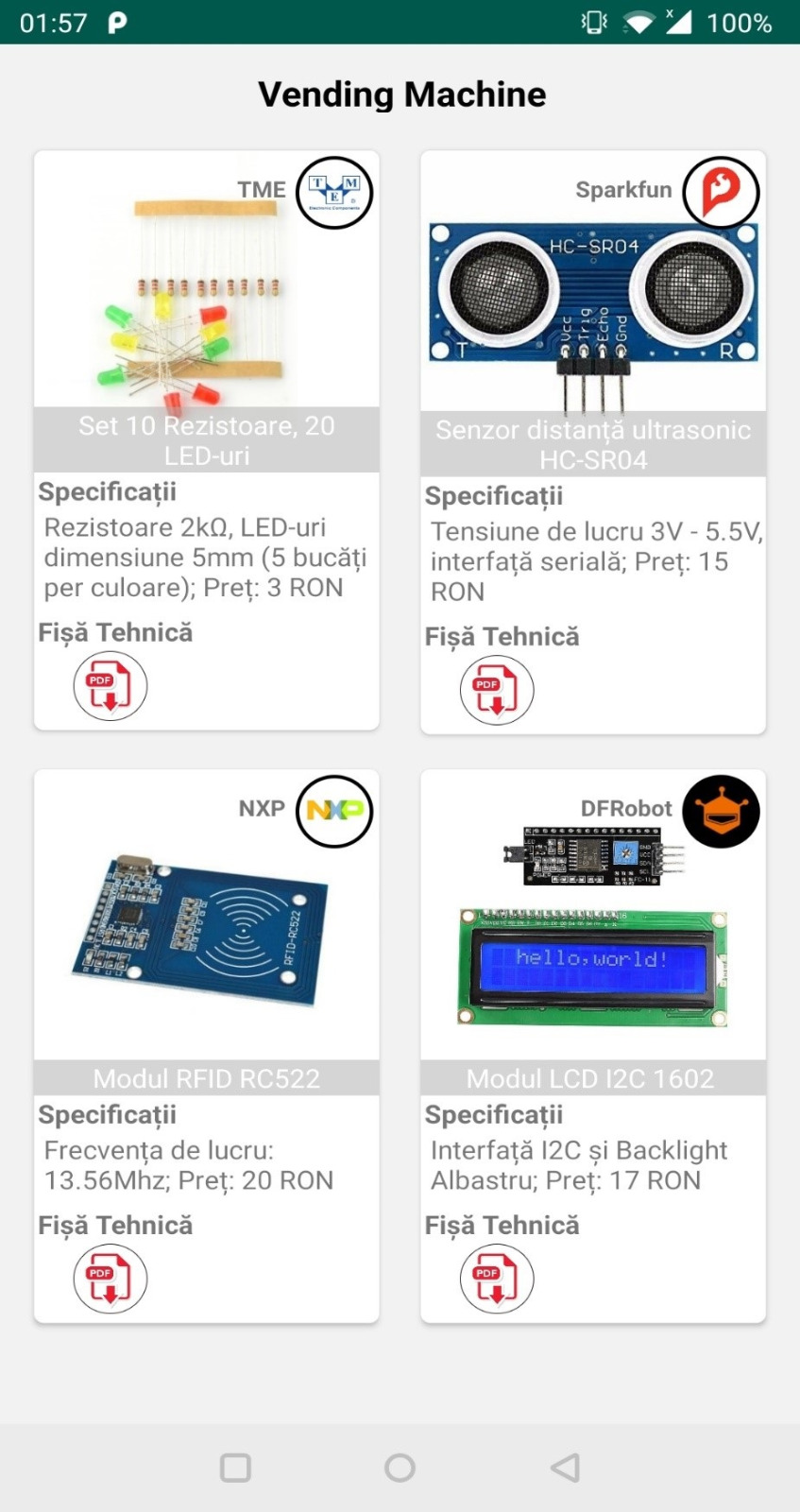
Main menu
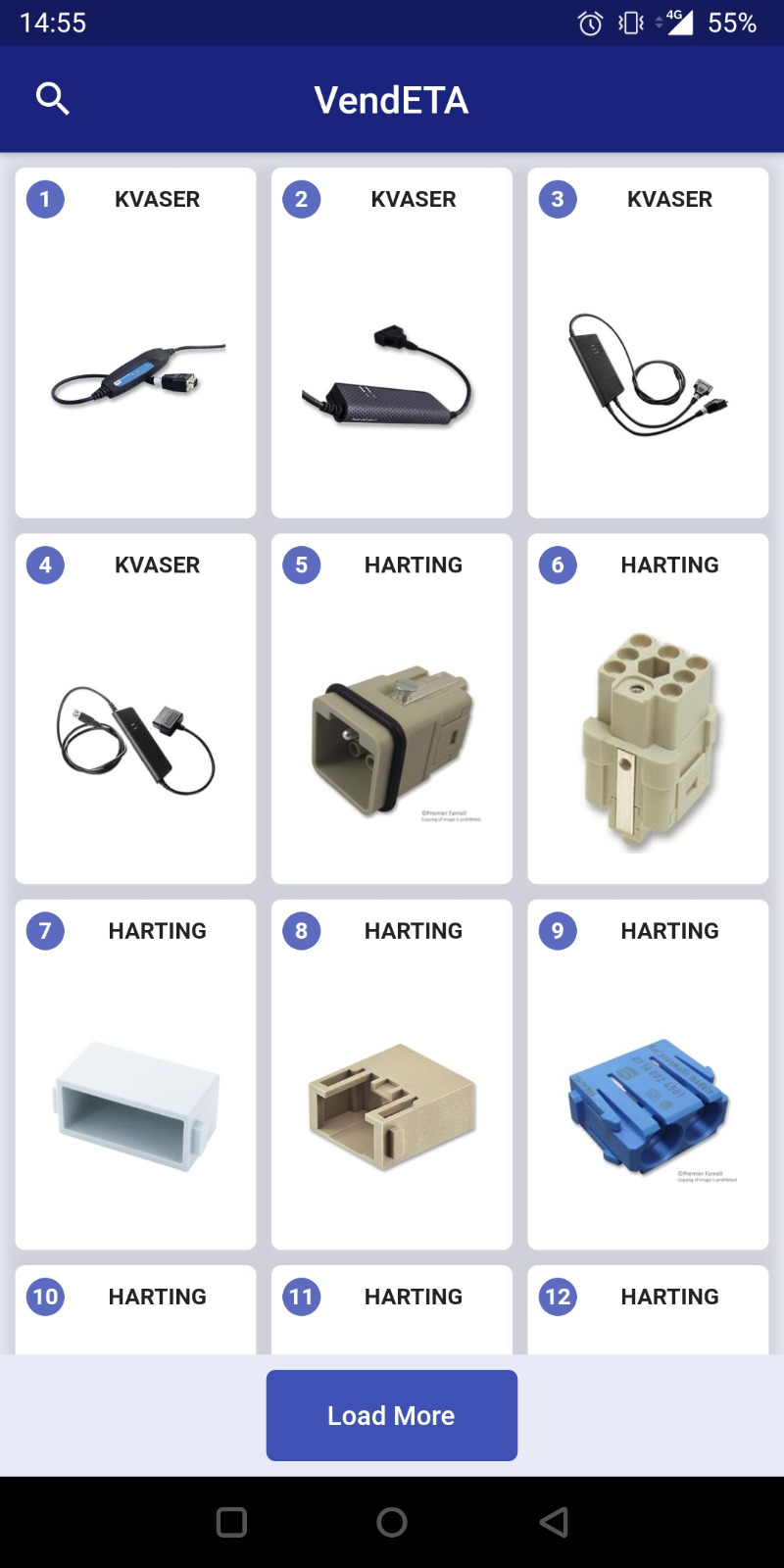
Search for "LCD" product and display results
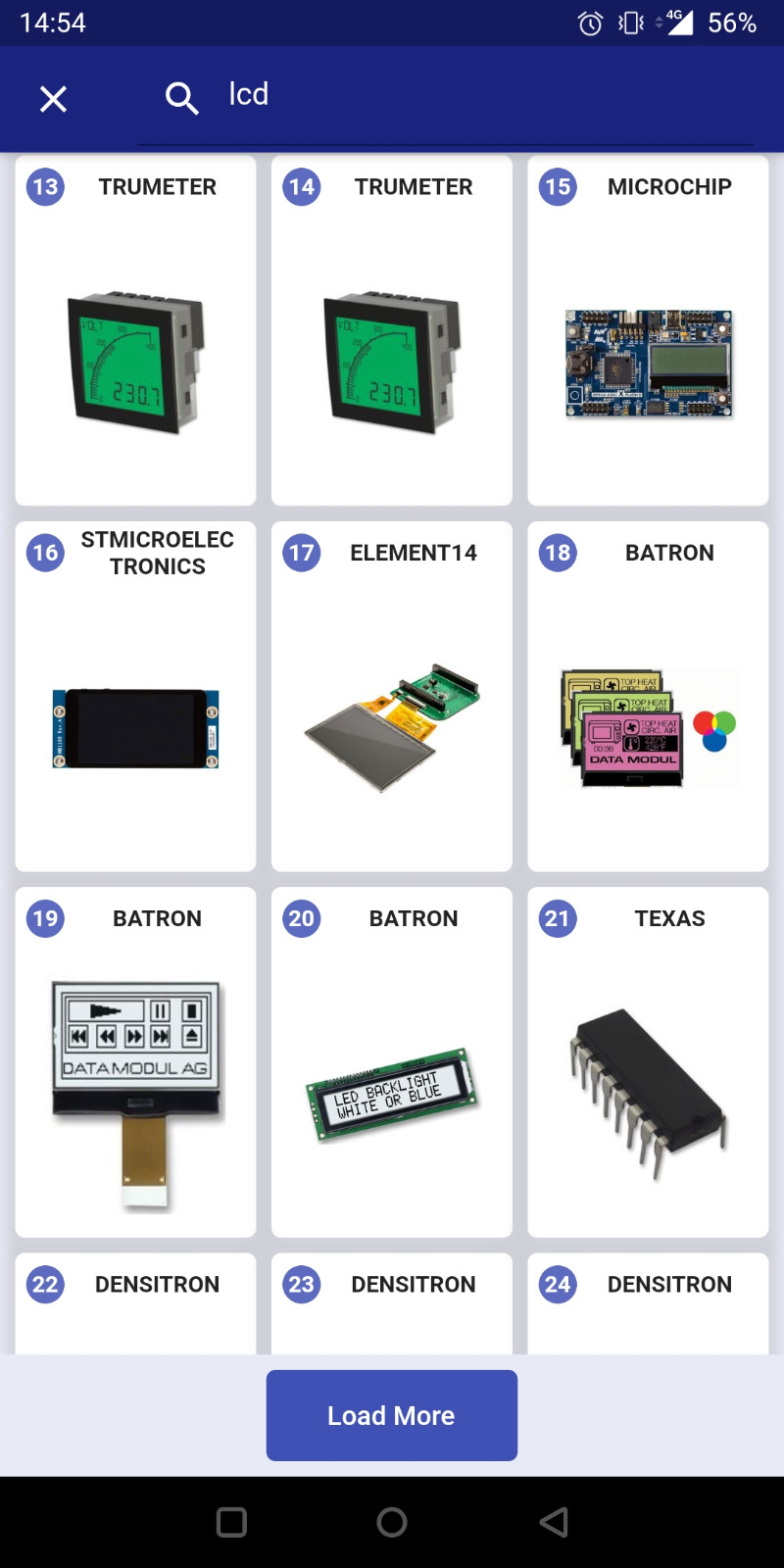
Product information popup
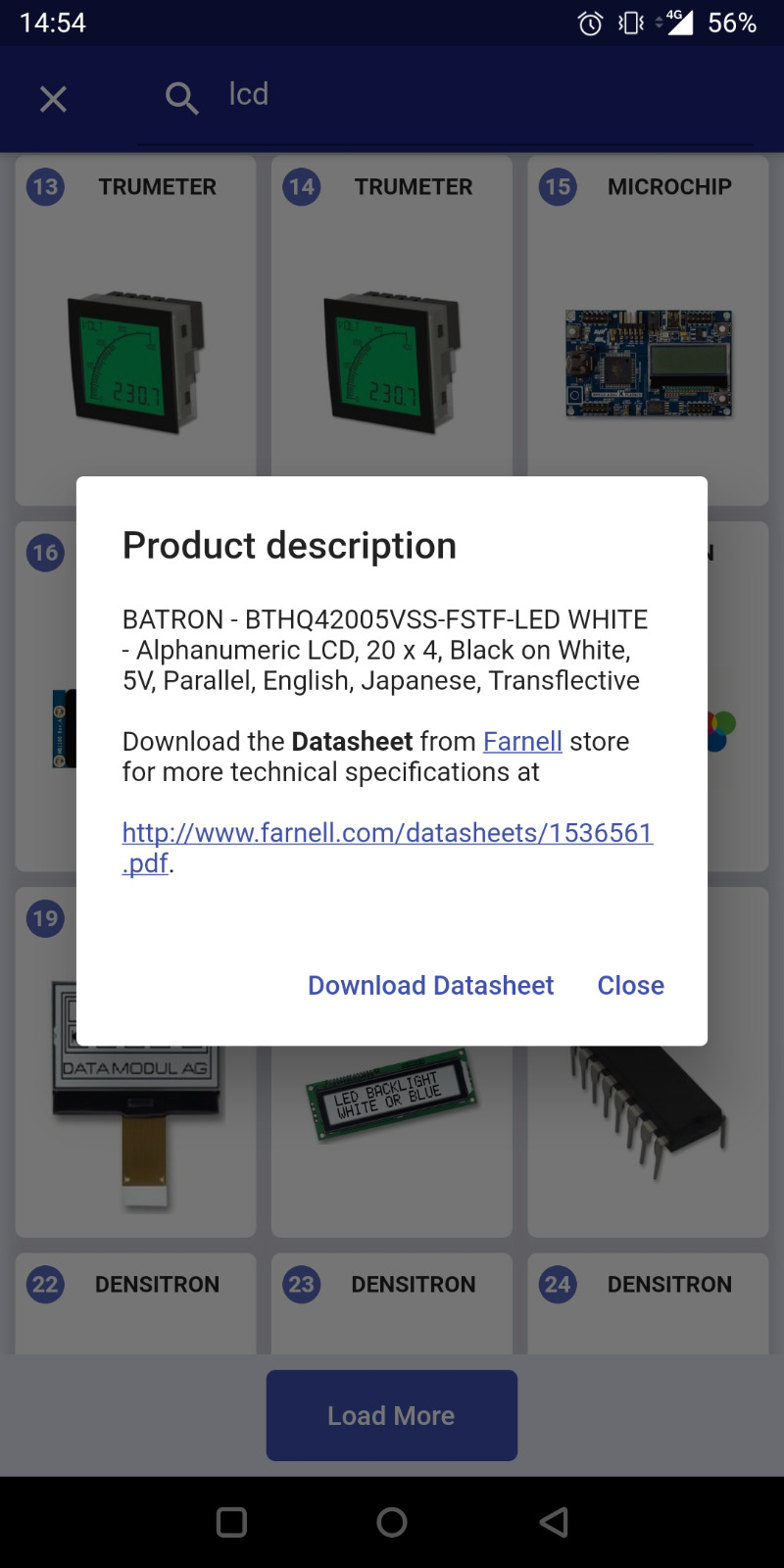
Search for unknown component
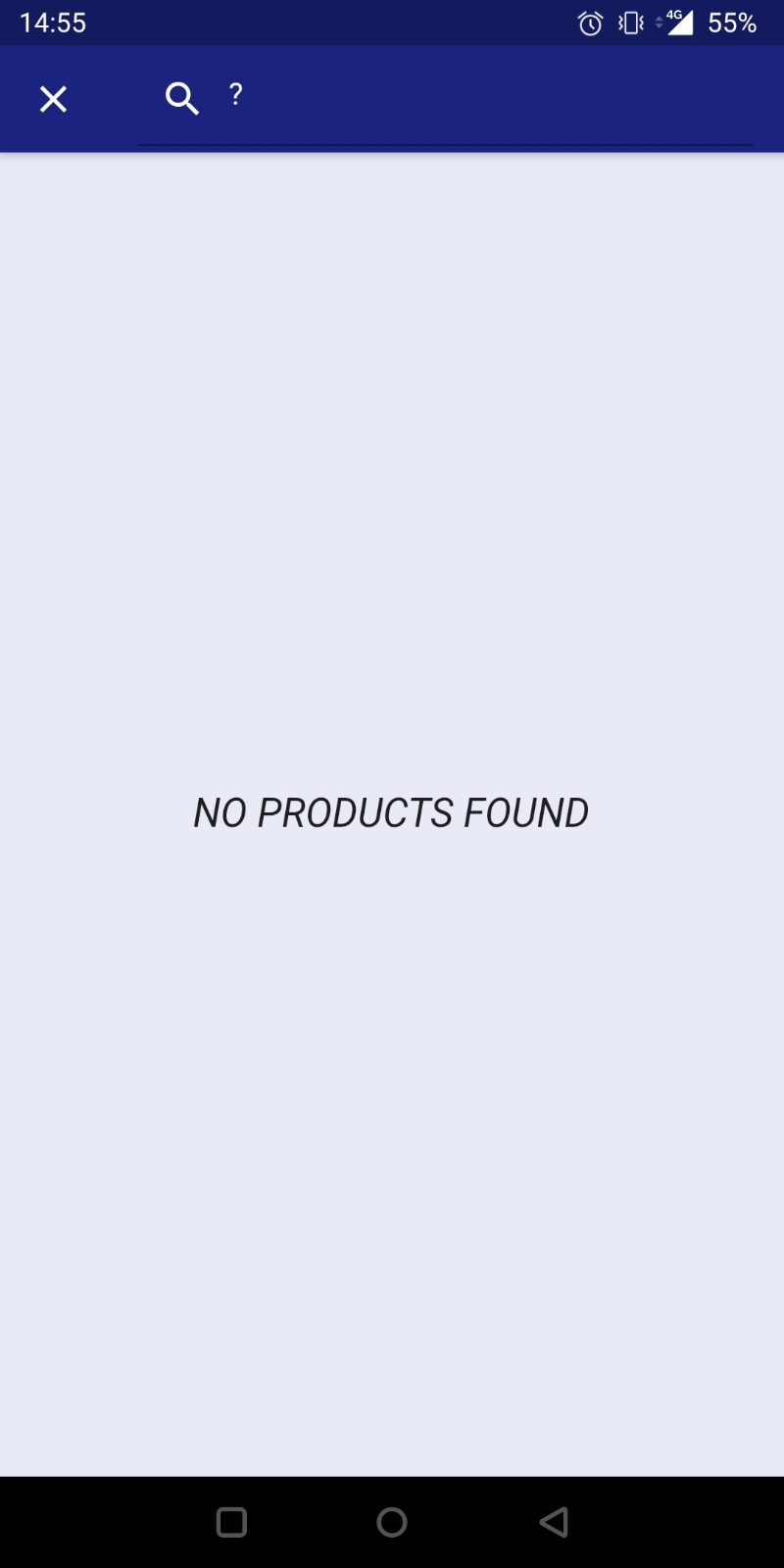
Search for "Sensor module" product and display results
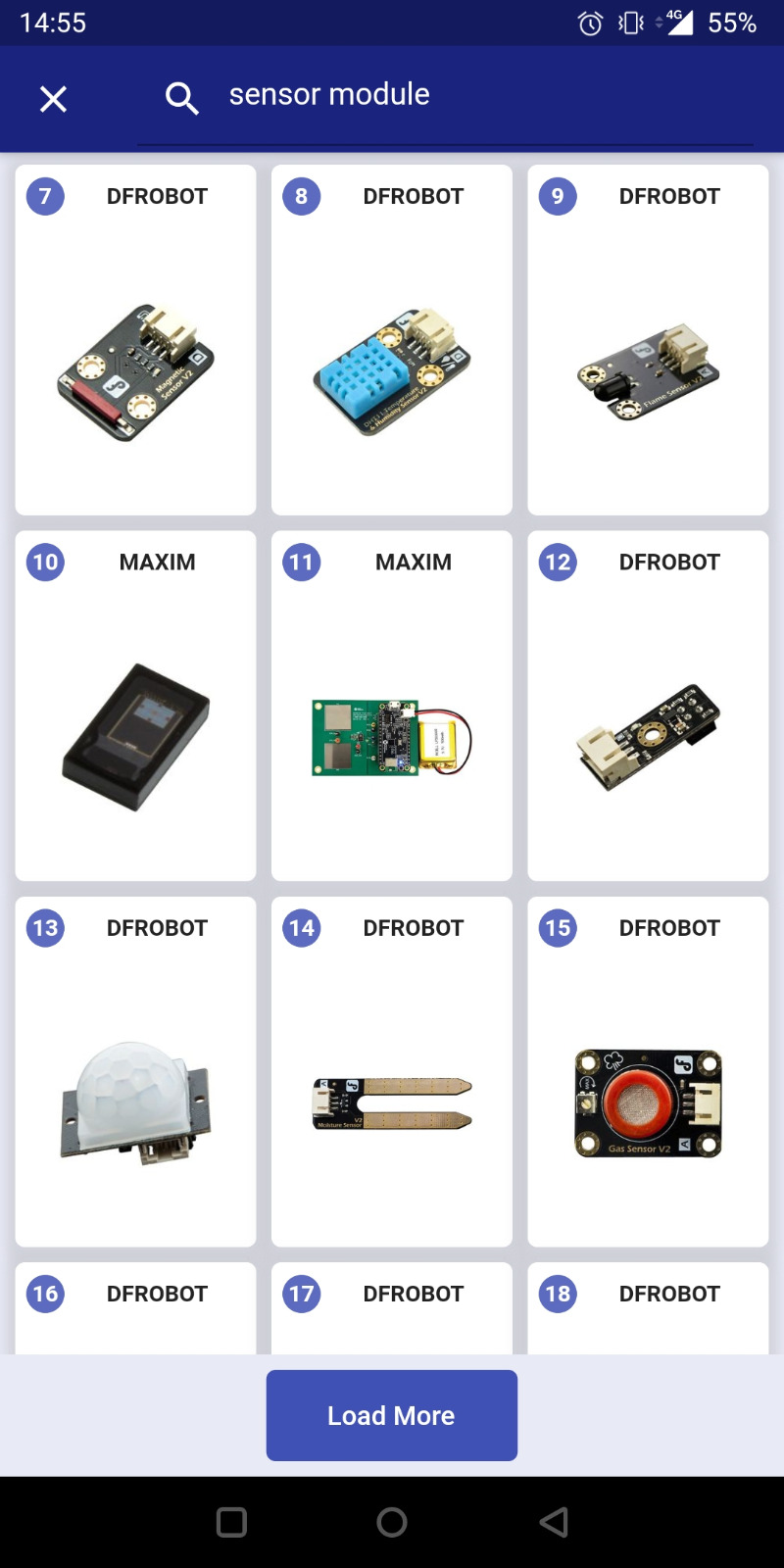
Here is the presentation video of the features created so far.
Since this is the first version of the application, we are still waiting for the validation of the clients and their feedback to improve our functionalities.
Milestone 8

First sale
Having developed an MVP, we were intersted in the feedback of our potential customers. We sent the apk file, and gathered some interesting insights of our product.
Our clients verbally told us their feedback, after testing the app, and their conclusions can be observed below.
Note that we did not explain any functionalities to our clients, as we wanted to see their first impression. We were pleasently surprised when we discovered that all of the features were discovered and used by our clients, in a short amount of time.
- Intuitive
- Responsive
- Easy to navigate between products
- Useful catalog feature (easily accesible datasheet)
- Not optimized for every device
- Little feedback given to the user
- Few bugs discovered involving the search feature
- Categories
- Pages
- Available stock
- Special gestures (e.g. long press)
Examples of written feedback can be seen in the following images:
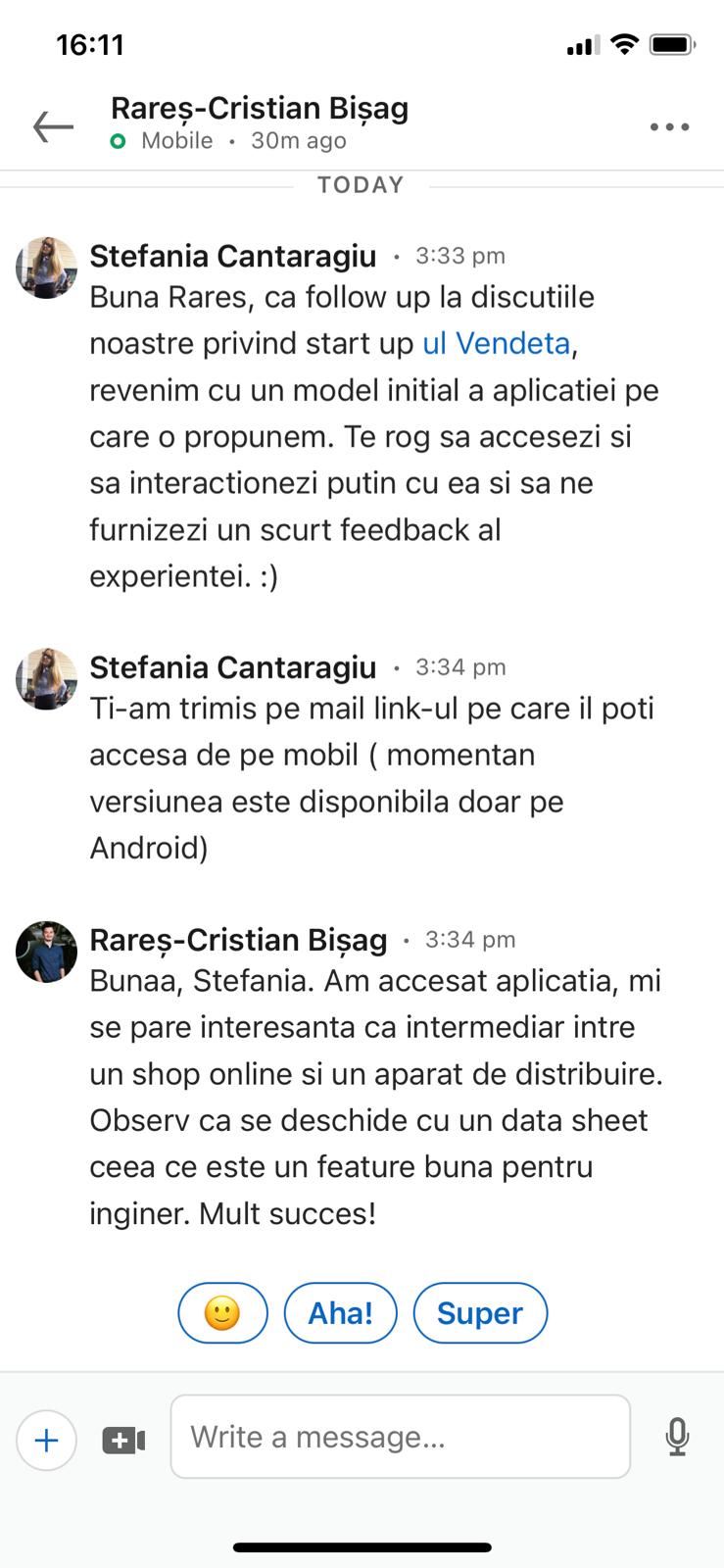

This milestone was essential as it facillitated the interaction of our potential customers with a palpable result. Even though our MVP is far from perfect, we consider it validated (as suggesed by the feedback), and we have a discovered some features which will be implemented in future versions.
TEAM
We are a team of passionate developers , with background in
Computer
Science and Electronics, ready to discover the applied science beyond the art of entrepreneurship. We hope
our
technical experience could be the starting point in order to create and promote innovative ideas based on
our
product.

Șerban Blebea
Product
Manager

Ștefania Cantaragiu
Technical
executive

Dan Ștefănescu
Technical
executive

Ailin Apturaman
Developer

Adrian Udvuleanu
Developer

Mircea Banceanu
Business
Analyst
We are a team of passionate developers , with background in Computer Science and Electronics, ready to discover the applied science beyond the art of entrepreneurship. We hope our technical experience could be the starting point in order to create and promote innovative ideas based on our product.

Șerban Blebea
Product Manager
Ștefania Cantaragiu
Technical executive
Dan Ștefănescu
Technical executive
Ailin Apturaman
Developer
Adrian Udvuleanu
Developer
